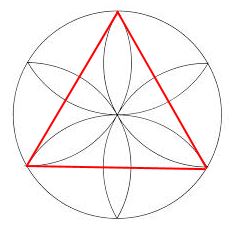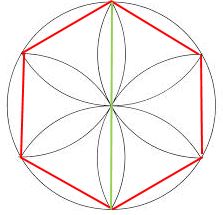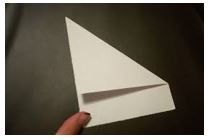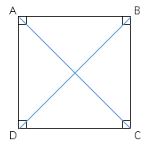Drawing a 2D shape accurately can be a nightmare but there are ways to draw them accurately that are fun too. In these activities the pupils will accurately construct several regular 2D shapes.
Suitable for: Year 4 to Year 6
Learning Focus:
- Be able to use a compass to construct 2D shapes
- To be able to measure a 90 degree angle using a protractor
Activity One:
Most of the shapes we are going to construct are based on a circle.
Give the pupils a pair of compasses each to use and ask them to set the distance between the point and the pencil to 8cm. Explain to them that this will be half the width (diameter) of the circle they’ll draw and is called the radius.
Ask them to draw a circle, keeping the point of the compass firmly pressed into the paper so it doesn’t slip.
Now place the point of the compass anywhere on the edge of the circle and draw a curve from one part of the circle until it touches another. Tell them this is called an arc. Ask them to place the point where the arc touches the edge of the circle and draw another arc. Repeat this until they have six petal flower design.
Ask them to join the tips of alternate ‘petals’ and tell you what shape they will have drawn (equilateral triangle).
Activity Two:
Ask the pupils to repeat the process until they have the flower pattern but this time join the tip of each ‘petal’ together. Can they tell you what shape they will have constructed this time? (Regular hexagon)
If they join two opposing corners of the hexagon together, they’ll make two identical new shapes – do they know what these are called? (A trapezium)
You can extend this activity by asking the pupils to find the relationship between the distance from petal tip to petal tip and the radius or ask them to find other equilateral triangles within the circle.
Activity Three:
It’s possible to extend the set of activities to drawing a regular dodecagon (12 sided shape) by placing a mark halfway along the line joining two adjacent petals. Bisect the circle by drawing a line from the mark you’ve just made, through the centre of the circle to the far edge of the circle.
Now ask the pupils to draw another set of ‘petals’ starting from where the diameter you have just drawn, crosses the circle. By joining the tips of the twelve petals. the pupils will have constructed a regular dodecagon.
Activity Four:
You are now going to help the pupils to draw a regular octagon.
First they will need to make a square. This can be done in one of two ways:
Get a sheet of A5 paper, fold one corner over to the opposite side and press flat to form a diagonal. Cut along the perpendicular edge.
Draw a line 8cm long. Using a protractor, mark a right angle at each end then draw perpendicular lines, 8cm long and join them with another 8cm line. Cut out your square.
Use lined paper as it will make constructing your octagon easier.
Draw in the diagonals on your square and use a pin through the centre to keep the square in place. Keep the horizontal edges parallel to the lines on the sheet and draw around the shape. Now rotate the square 90 degrees. You’ll know you’ve got it right because the diagonal will now be parallel to the lines on the page. Draw around the square in its new position then join the adjacent corners. Ask the pupils what shape they have constructed (octagon).






